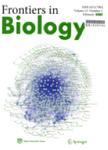Effectiveness of revascularization of the ulcerated foot in diabetic patients with peripheral artery disease for one year follow-up
作者机构:Department of Radiologyschool ofmedicineAhvaz Jundishapur University of Medical SciencesAhvazIran Department of Internal MedicinSchool of MedicineAhvaz Jundishapur University of Medical SciencesRazi HospitalAhvazIran
出 版 物:《Frontiers in Biology》 (生物学前沿(英文版))
年 卷 期:2018年第13卷第6期
页 面:458-463页
核心收录:
学科分类:0710[理学-生物学] 07[理学] 09[农学]
主 题:percutaneous transluminal angioplasty revascularization diabetes
摘 要:Diabetes is an important risk factor for atherosclerosis. The diabetic foot is characterized by the presence of arteriopathy and neuropathy. When ischemia is diagnosed, restoration of pulsatile blood flow by revascularization may be considered for salvaging the limb. The treatment options are angioplasty with or without stenting and surgical bypass or hybrid procedures combining the two. To evaluate the outcomes of severe ischemic diabetic foot ulcers for which percutaneous transluminal angioplasty (PTA) was considered as the first-line vascular procedure. Factors associated with successful PTA were also evaluated. In 80 consecutive diabetic patients with foot ulcers and severe limb ischemia, PTAwas performed if feasible. All patients were followed until healing or for one year. Clinical and angiographic factors in fluencing outcomes after PTA were sought by univariate and multivariate analysis. PTAwas done in 73 of the 80 (91.2%) patients, and considered clinically succe ssful in 58(79.9%). Successful PTA was significantly higher in patients with Superficial femoral artery, posterior Tibialis and dorsalis pedis arteries involvement in the univariate analysis. Seven patients were expired during the study follow up due to MI, pulmonary thromboembolism and GI bleeding. PTA in diabetic patients with severe ischemic foot ulcers provided favorable. Some parameters could be used for predicting PTA successfulness.



